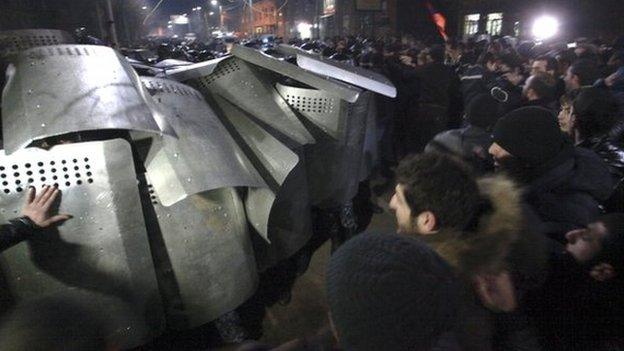Armenia energy protests: Electric atmosphere in Yerevan
- Published
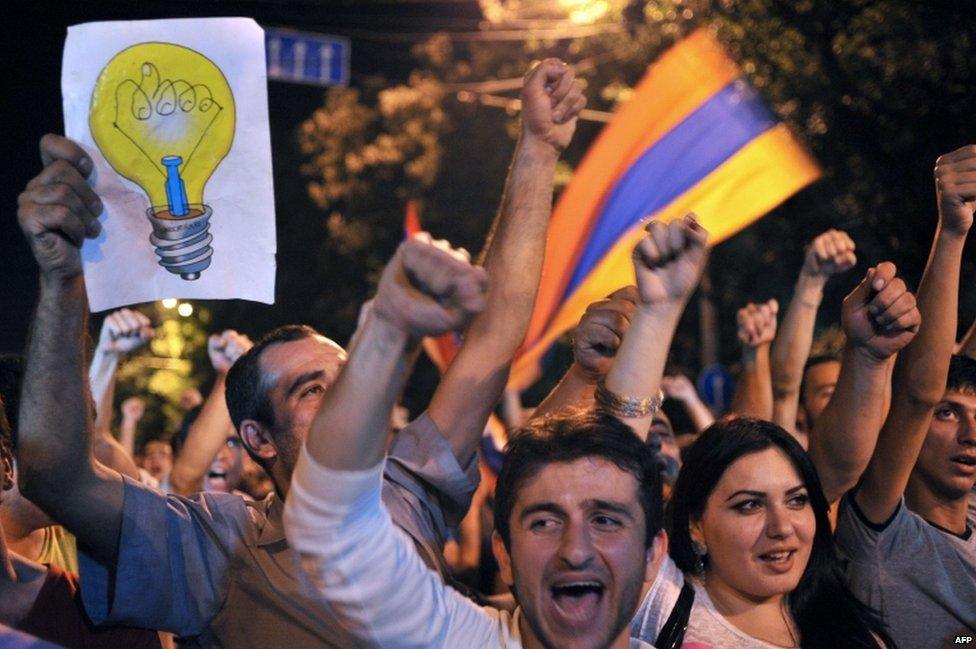
"We will win!" chants the crowd on Baghramyan avenue in Yerevan.
This street, which leads to the presidential administration building, has become the focal point of the continuous protests against rising electricity prices.
The protests began a few days after a 17 June decision by the state utilities commission to increase electricity tariffs from the beginning of August by more than 16%.
The situation escalated when police used water cannon to disperse the crowd in the early hours of 23 June.
More than 200 demonstrators were arrested, a number of local journalists mistreated, their equipment and phones smashed.
The heavy-handed reaction angered people and only strengthened their determination to stay put.
#ElectricYerevan
The round-the clock protest is now referred to on social media under the hashtag #ElectricYerevan, external.
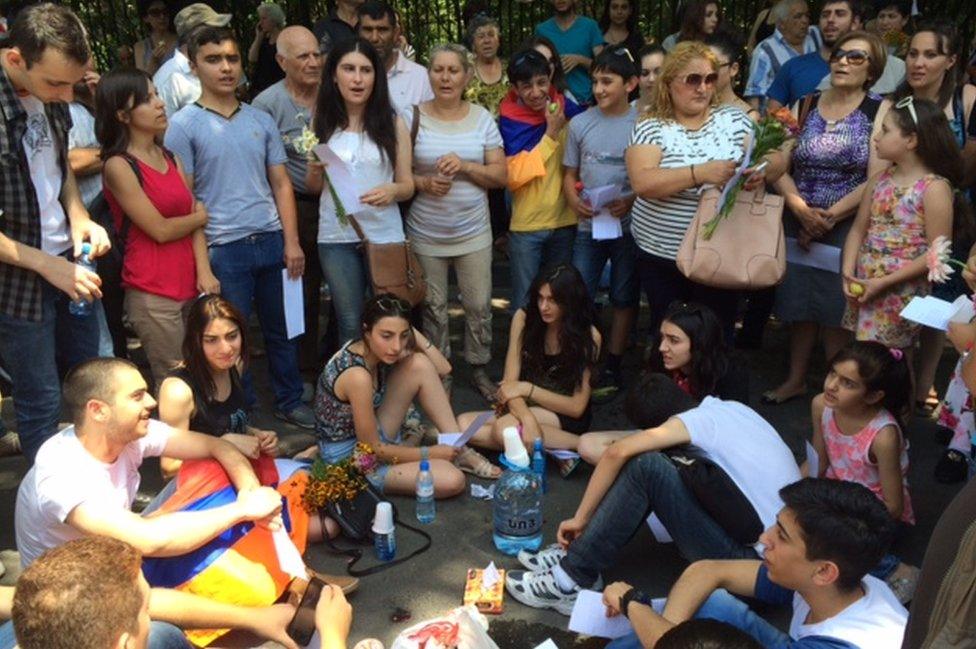
In daytime, despite the summer heat, a few hundred people are on site. They are in a festive mood: singing traditional songs, dancing in circles, and issuing powerful chants.
Volunteers distribute water, snacks, ice cream and locally grown apricots.
By night the crowd grows bigger - in the thousands.
The atmosphere is electrifying. Young and old are united in their determination to keep the protest going until the people's demands are met.
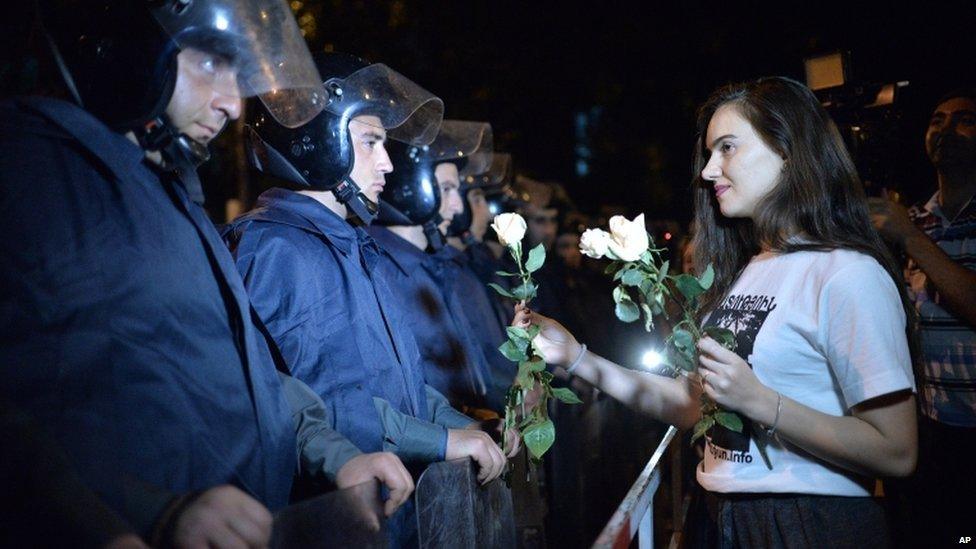
Many of the demonstrators are young activists and students
What is different about these protests is that there is no affiliation to any known political party or opposition movement.
This is a civil initiative, "No to Plunder", and the majority of demonstrators are teenagers and students mobilised through social media.
"It's about raising our heads and saying to the government 'talk to us before you make a decision'," explains young activist Armen.
"Our only demand is for the government to back down on its policy of a price hike."
Growing mistrust
There are lots of Russian media crews among the international journalists covering the protests. Armenia is Russia's strategic ally and is home to Russia's only military base in the South Caucasus region.
But people here are not happy with the way Russian media have been covering the protests.
"Our growing mistrust towards the Russian media is their own fault," says a local blogger, Izabella Abgaryan.
"They are comparing this protest to Ukraine's Maidan, they are saying that protesters are armed, it's a complete lie."
At the centre of the current crisis is a Russian-owned company.
State regulators introduced the price hike in response to a request made by Electric Networks of Armenia (ENA).
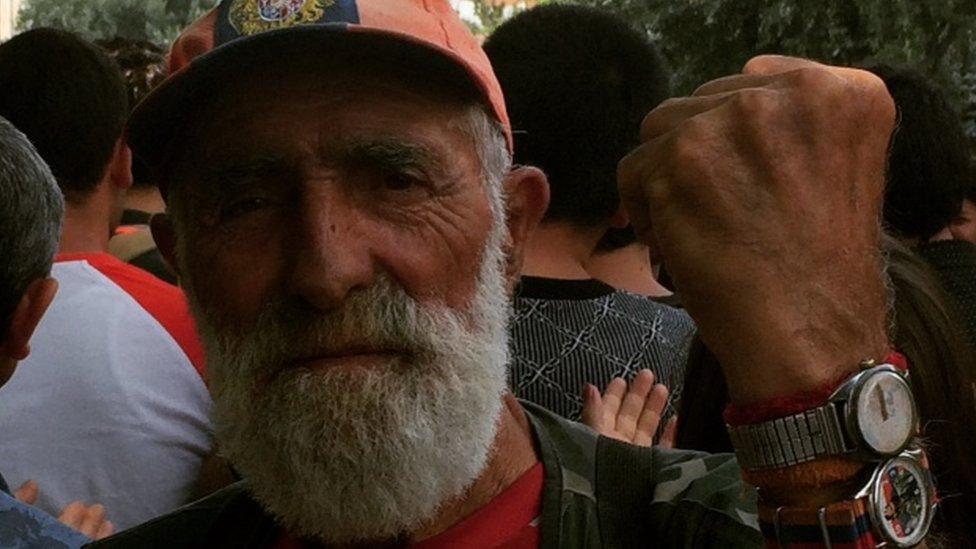
ENA is wholly owned by Inter-RAO, a large Russian energy company whose chairman Igor Sechins is a close friend of President Vladimir Putin.
In May, Armenia's Energy Minister Yervand Zakharyan backed the ENA's request to raise electricity tariffs, describing the reasons behind the move as "grounded".
Mr Zakharyan said that the ENA had accumulated more than $220m (£156m) in debt and had to repay bank loans that were guaranteed by the government.
'Lavish spending'
But public trust in the company was further damaged after the ENA presented a report to parliament justifying a price rise. The 3,000-page document detailed the company's expenses.
"Much of the 'bankruptcy' necessitating the price rise was linked to what was uncovered: the excessive and lavish spending on homes, rental luxury cars for the Russian executives - this is tapping into a deeper undercurrent," says political analyst Richard Giragosian from the Yerevan-based Regional Studies Centre, who has been studying the report.
Government officials have acknowledged "management problems" at the ENA, external but said consumers would not have to pay the price.
Even though demonstrators want to distance themselves from political demands, the ongoing protest is not just about electricity prices.
Analysts say it is about years of alleged corruption and unaccountability within the Armenian government, and big business monopolised by Russian oligarchs with ties to the Kremlin.
Mr Giragosian says the public is angry at the Armenian government's timidity in dealing with Moscow, with many seeing it "as the erosion of sovereignty and Armenia's independence".
- Published24 June 2015

- Published16 January 2015
